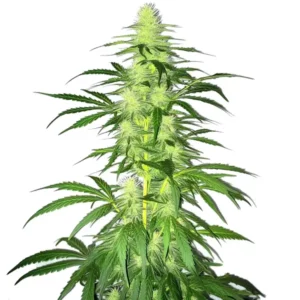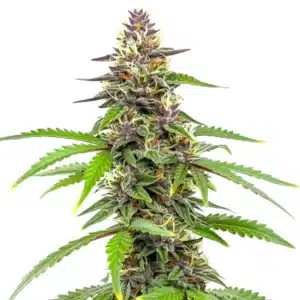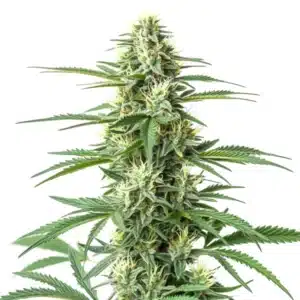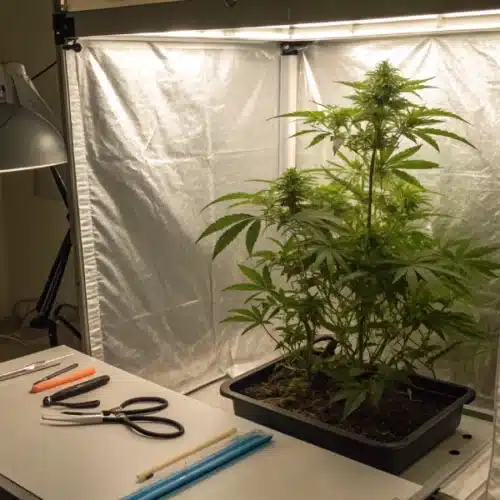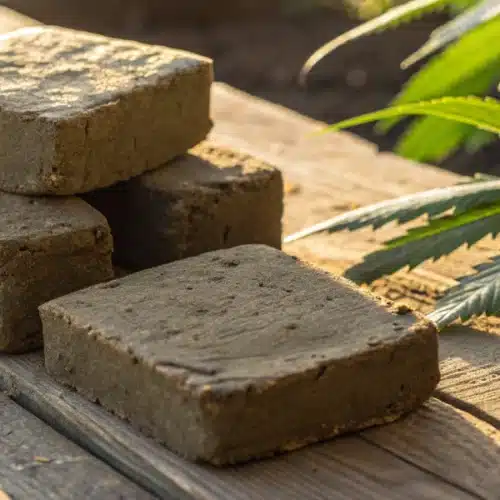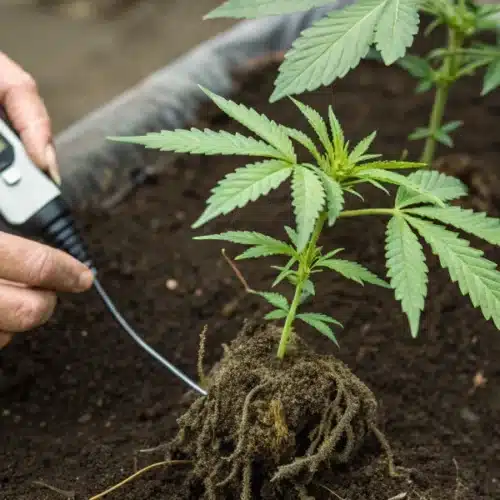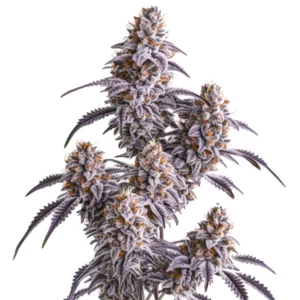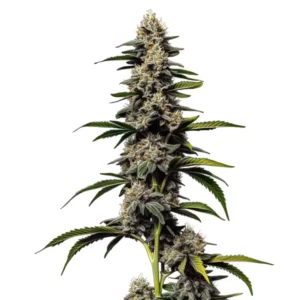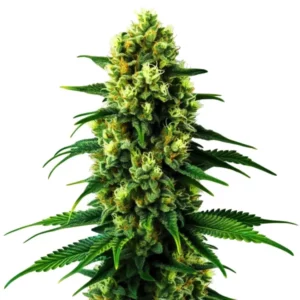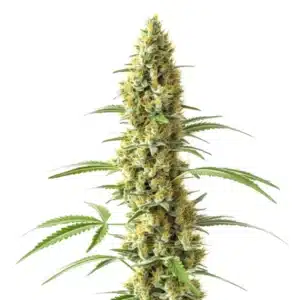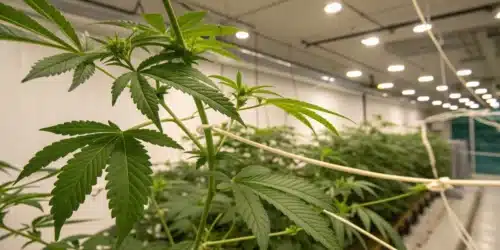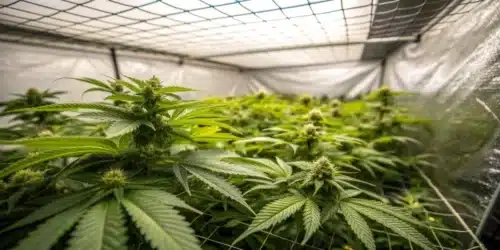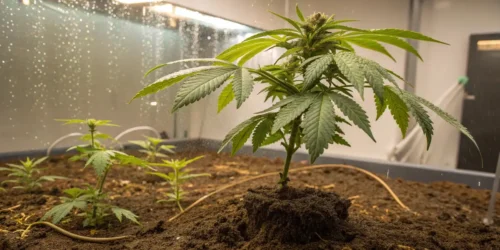The mycorrhizae are a process by which the fungi consume the sugars of the environment in which the plant is cultivated and then return the nutrients available in the substrate through the water to then be consumed by the plant’s floors. The above also allows cannabis plants to develop a large root system thanks to mycorrhizae which makes your crop healthier and probably produces much more marijuana.
Benefits of mycorrhizae in cannabis plants
If you want to grow high-quality cannabis, then you need to pay attention to the roots of your plants. Many times, when plants show symptoms of disease, it is believed that adjusting the feeding parameters will solve it. However, on many occasions, this is not the case and it happens because the roots are not healthy.
The mycorrhizae deliver many different benefits to the plants including strong and abundant roots that create a solid network. In addition, the vigor of the plants is noticeable as they have natural colors, abundant and healthy foliage, and a solid and firm structure. The buds are also more abundant and their structures tend to be much stronger than a plant that has not been grown with mycorrhizae.
We must clarify that the mycorrhizae do their job when they come into direct contact with the roots of the plant and an extra quantity of these fungi and their spores are always needed because the latter move slowly through the substrate due to their size. They are not found in large quantities in soils either which is why using mycorrhizae such as those sold in grow shops is the best way to promote their colonization in the substrate and optimize our crops.
Promos & Deals
Two types of mycorrhizae for marijuana plants
Endo
It is good to point out that there are two types of mycorrhizae for growing cannabis and all kinds of plants. These two forms of mycorrhizae fulfill the same function, however they achieve their objectives in a different way.
First, there are the ecto mychorrhizae that live outside of the plant’s root system and can be seen without the need for a microscope. Secondly, we have the endo michorrizae that live inside the root of the plant and from there, they help the plants develop in a healthy way. So, both types of mycorrhizae help the plant in its nutrition and development, both in the growth phase and in flowering because mycorrhizae during flowering improve phosphorus absorption, ensuring optimal bud development while enhancing nutrient uptake.

In other words, a network is created between the roots of the plant and the “roots” of the fungus which generates an exchange of nutrients between the mycorrhizae and the plants in exchange for the sugars produced by the cannabis plants. They are the main food source for fungi. Mycorrhizae are ancient fungi that throughout history have helped plants, trees, shrubs, and endless members of the flora on a planetary level to survive and live. Now, for cannabis, the endo mycorrhizae are the ones that are most helpful the development of its roots and structure.
When we talk about organic crops, we must say that these fungi are great allies for marijuana plants and their breeders because they help reduce fertilizers, provide great resistance to salt toxicity, and delay wilting, reducing the chances of diseases and deficiencies in the roots. In addition, by helping to create stronger and more powerful roots, the plants that need to be transplanted are usually stronger and withstand the stress of transplanting without major problems.
Mycorrhizae for hydroponic cannabis crops
Mycorrhizae can be applied in hydroponic crops without many problems, either during the first phase of growth or transplanting and is very good for the roots. This is important because in water cultivation, the plants do not have the necessary nutrients. In addition, other culture media such as coconut do not have the necessary mycorrhizae to feed the plant. To optimize the use of mycorrhizae, the best conditions include temperatures between 68º and 73 °F and a pH between 5.5 and 7.0. Therefore, it is best to select a product that contains various types of mycorrhizae because some of them can tolerate more alkaline PH levels, thus increasing the variables and the chances of success.
As we know, mycorrhizae can be utilized in solid substrates but there are also mycorrhizal mixtures specially designed for hydroponic cultures where the spores and hyphal fragments are mixed with administration media in liquid or powder form. Despite this, most mycorrhizae available from grow shops can be added directly to hydroponic crops as the particles within the mix are small enough to pass through systems without clogging. You must also use inoculating products that you can also buy at your favorite grow store so that the mycorrhizae multiply in the water as they do not usually multiply autonomously in large quantities. Also, you can add other products that help strengthen the root and are of organic origin so that they work together with the mycorrhizae and optimize your cannabis cultivation.

When you use mycorrhizae, you must ensure that the hydroponic system has oxygen levels between 6 and 8 ppm. For this, air stones or bubblers are used so that the roots have the necessary oxygen as the entire process is 100% aerobic. In order for the mycorrhizae to multiply and live well in the culture medium, phosphorus levels in the solution where the plant grows must be controlled because fungal spores do not support phosphorus levels of 70ppm or higher. Therefore, it is always good to control this variable. Also, you must control the amounts of chlorine in the water because fungal spores do not thrive in water with a high chlorine content either. Therefore, it is good to have water treated with osmosis or filtered systems.
When do I use the mycorrhizae for growing?
The effectiveness of mycorrhizae increases if you start using them from seeds because the fungi take a couple of weeks to settle in the culture medium and start working with the roots of the plant. Therefore, the faster the application of the fungi in the crop, the stronger and more vigorous it will be. As we already said, the endo michorryzae fungi are the ones that contribute the most to the crop. Therefore, we recommend you use this type of fungi if you grow in soil and if you grow in hydroponics. Remember to use a variety of different fungi to ensure the subsistence and contribution of mushrooms.
Gardeners used to cultivating with mycorrhizae put a dose of the fungi in the hole where they plant the newly germinated seed and then cover the cannabis seed with a little substrate as is done normally to wait for the emergence of the seedling with its cotyledons. Using this simple technique, breeders ensure that the fungus starts working as soon as the main root emerges from seed, promoting explosive root growth.

In the event that you want to transplant your cannabis plants, for example, from a small pot or glass in which the seedling grew in its first phase to a larger pot, you can sprinkle the spores of the mycorrhizal fungus in the hole of the new substrate where your weed plant is going to be planted so that the roots, upon contact, begin to colonize the new home.
Perfect in the flowering time of marijuana plants
It is good to have phosphorus under control when growing in hydroponics because there is a “special relationship” between this compound and mycorrhizal fungi. So, when you change from the vegetative cycle to flowering, it is good that you apply mycorrhizae in the substrate, either in powder or liquid, the latter recommended more because liquid fertilizers tend to act much faster.
We know that the macro and micronutrients are absorbed by the plant thanks to the mycorrhizae, but it is also good to emphasize that mycorrhizae during flowering enhance phosphorus breakdown, which is crucial for robust bud production. Therefore, these fungi become essential in this part of the process.
Therefore, these fungi become essential in this part of the process. For detailed guidance on growing a specific cannabis strain using similar techniques, learn more about how to Grow Goji OG.
Soluble application of mychorrhizas

Apart from what has already been described, mycorrhizae can be applied in soluble form which can be in powder or liquid format. These solutions can be applied in different ways. We are going to tell you about them here so that you can do it perfectly.
Seeds: When you have the seeds before planting, even before they germinate, you can submerge them in the mycorrhizal solution for 8 to 12 hours. Remember to use water without chlorine.
Seedlings: If you have a plant that has sprouted in a jiffy, you can water or soak the hole where you are going to plant them with the solution and wait for the fungi to do their job.
Plants in soil or pot: If you have already planted your cannabis strains, you can water them with the microrhizome solution and this will make the fungi start working when they come into contact with the substrate or soil.
Transplants: If you are going to transplant your girls to a new home, you can water the area where they are going to be transplanted with the solution and then move on to your plants.
Hydroponic plants: Obviously, you can use mycorrhizae in your hydroponic crop without any problems. This will always ensure that the fungi enter into action with the roots.
Inject the soil or substrate: In some cases, the soil or substrate can be very hard. Therefore, you can dig a little or make holes and then with an injection or a similar method, inject the roots of the plant very carefully with the mycorrhizal solution.
Lava Cake
This extraordinary strain named Lava Cake is mostly indica and gardeners really enjoy growing it outdoors during the summer season. You can collect buds with 20%-22% THC levels that can be harvested after 8-9 weeks of flowering, thanks to its Thin Mint GSC and Grape Pie parents.
Lava Cake induces a great relaxing effect combined with flavors ranging from hints of peppery spiciness, sweet vanilla, and refreshing mint. Cultivated optimally, a breeder can harvest 500-550 gr/plant outdoors and about 450-500 gr/m2 indoors, making it a highly desirable variety by commercial growers.
Black and White Cookie
Black and White Cookie is a mostly-indica variety of cannabis that surprises because it has THC levels of 19%-23% with buds that produce euphoric effects with creative moments full of happiness, ending with an excellent relaxation. This strain is especially great to share with friends on a day off or after work.
Black and White Cookie breeders harvest 350-450 gr/m2 indoors from this strain, while outdoor gardeners collect 500-550 gr/plant of compact and fat buds that are loaded with aromatic resin. On the other hand, the flowers have a flavor that combines sweet vanilla notes and smoky tobacco tones with a soft diesel in the background.
Melonade
This variety with THC levels of 20% to 25% called Melonade is an authentic tropical strain because it produces buds with sweet, lemony, and tropical flavors infused with a soft fragrance on the palate when smoked.
Melonade is ready to be harvested after 9-10 weeks of flowering with growers obtaining between 500gr-600gr/m2 indoors. But that’s not all because outdoor breeders must be prepared for an extra large harvest of 900gr-1200gr/plant. These great yields are due to its Wattermelon Zkittlez x Lemon Tree parents who give this strain that is otherwise mostly sativa the character of being a mega bud producer.
You already have everything you need to know about the fascinating world of mycorrhizae fungi that are your great allies in the garden, collaborating with the roots of your cannabis plants to support their development. Do not forget to use the best mycorrhizae that you find in each crop and you will see how the harvests will be increasingly heavy with dense buds full of resin that will leave your hands black and sticky.

